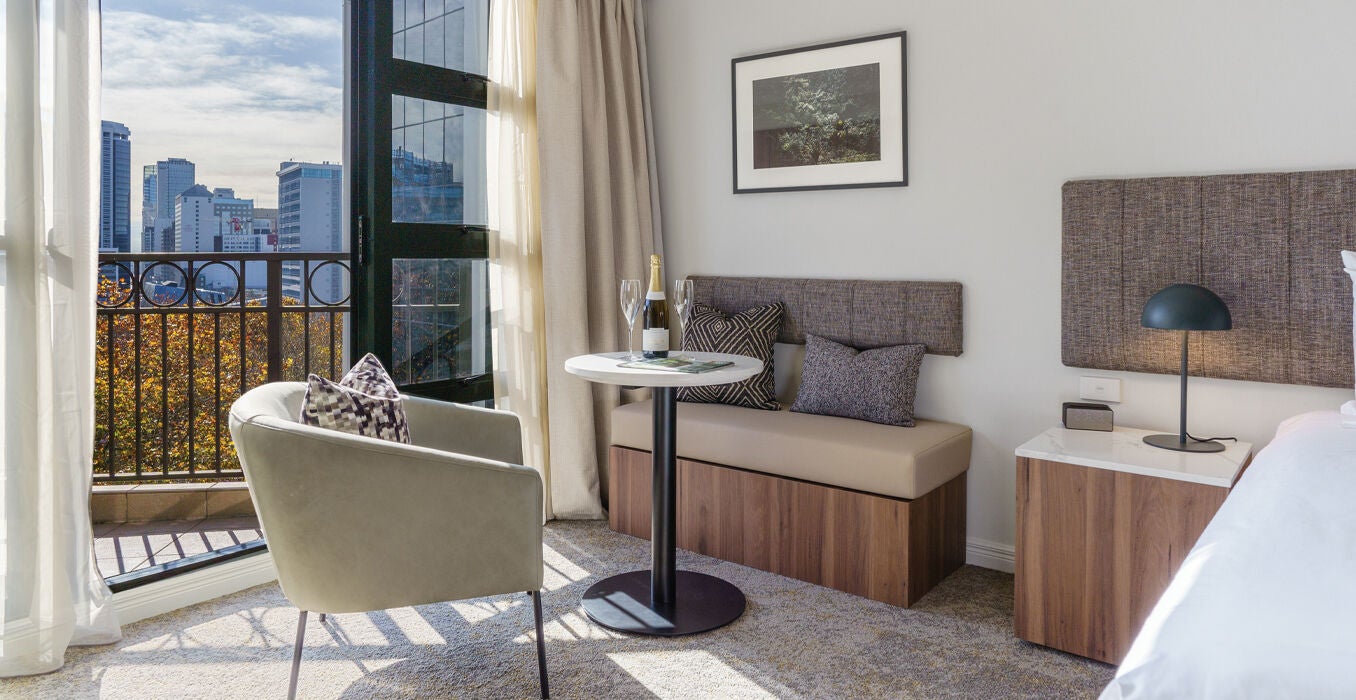Hotels, Tourism & Leisure -
New look, new life

Hotel refurbishments allow operators to remain relevant in a competitive market, to boost guest experiences, and increase revenue potential.
With the guest dollar being chased by commercial accommodation providers, and with a close eye on occupancy rates and bottom lines, hotel operators are actively refurbishing existing properties to improve brand image, signal a commitment to quality, innovation, and sustainability, and to enhance customer satisfaction.
Two 5-star examples are the comprehensive upscale refurbishment of the former Stamford Plaza in lower Albert Street in the CBD to create JW Marriott Auckland, while InterContinental Auckland has opened in the refurbished ex-HSBC building in the Commercial Bay precinct, occupying levels six to 11 of the now-Deloitte Centre building.
Bayleys national director hotels, tourism and leisure, Wayne Keene says hotel operators across price points are looking to position themselves in a crowded accommodation market where discerning guests have high expectations.
“First impressions count with astute refurbishment projects going beyond mere cosmetic improvements to enhance operational efficiencies, attract new segments of the market, and help with staff attraction and retention.
“A cleverly-refurbished property can also improve business valuations – always an important consideration."
Bespoke approach
Auckland-based interior design and procurement company Furnz Group works with leading hotel and boutique accommodation operators across New Zealand, Australia and the Pacific Islands on full or partial refurbishment projects, and new-build fitouts.
Sustainability is a huge driver in the commercial accommodation sector, from stakeholders demanding transparency, efficiencies, “green” thinking and responsible governance to align with environmental, social and governance (ESG) policies, through to guest decision-making around where they will spend their dollars.
Refurbishing existing stock, or repurposing other assets to hotel use, is not always the easiest path to navigate.
Furnz Group director Euan Armstrong says the sustainability benefits of repurposing or repositioning existing hotel properties largely depends on the longevity and condition of the buildings.
“To ensure these projects are environmentally responsible, it’s crucial that the existing properties meet current building standards and customer expectations. Only buildings with sufficient structural integrity and compliance with modern standards are suitable for refurbishment.
“If significant updates or repairs are needed, the process becomes more complex and time-consuming, potentially diminishing any sustainability benefits as the additional resources and efforts required may offset some of the environmental advantages.
“Where criteria are met, our approach provides complete visibility throughout the project lifecycle, minimal waste, and the use of sustainable materials to ensure that the refurbishment aligns with both environmental and quality standards.”
At the flagship end of the spectrum, the newly opened Horizon by SkyCity hotel in Auckland is Qualmark Gold accredited and has Toitū carbon reduce certification. Furnz Group completed the soft fitout of the 305 guest rooms, and the public spaces including the porte-cochère, lobby bar, courtyard, and The Grill restaurant. The end result is a cohesive and refined aesthetic throughout every area of the hotel – right down to commissioning local artists to create custom artwork.
But on the upgrade side, Furnz is also refurbishing hundreds of hotel rooms around the city – and beyond. Past and ongoing projects include work for Heritage Hotels, Quest, Radisson, Sudima, Wyndham and Robertson Lodges.
Armstrong says the firm believes in creating timeless spaces that transcend fleeting trends, with designs that are relevant and distinctive, steering clear of repetitive product use across projects.
“By forging strong relationships with suppliers and staying informed of emerging products and innovations, we ensure that each design remains unique and fresh.
“This bespoke approach allows us to integrate new, high-quality materials and furnishings into each project, maintaining a distinctive edge and ensuring they stand the test of time.” Beginning with comprehensive consultations to fully understand a client’s vision and preferences, Furnz finds design solutions that align with each client’s style and functional needs, through a proven process that is flexible and adaptive.
“For clients with established brand standards, we rigorously adhere to these guidelines, integrating elements that reinforce brand identity and maintain consistency.
“Custom-crafted details and innovative design choices avoid a cookie-cutter look, and we maintain open communication and incorporate client feedback throughout the design process, to ensure we not only meet, but exceed client expectations.”
A delicate balance
Armstrong says managing refurbishments while the hotel remains operational requires balancing construction demands with guest satisfaction, and demands careful planning and clear communication.
"By phasing the work, different parts of the hotel can remain open while renovations are underway, and by isolating the construction zones, guests aren’t exposed to noise, dust, or other disruptions,” he explains.
“A well-planned approach, including scheduling during low occupancy periods and maintaining a clear timeline, helps minimise disturbance.
“We work closely with trusted contractors who are flexible, discreet, and fully understand the importance of keeping guests happy, and also collaborate with hotel owners, franchisees and stakeholders to ensure any short-term inconvenience turns into a positive experience for future guests once the project is complete.”
Budget allocations will depend on the overall scope of the project and whether it involves structural changes (hard design) and/or aesthetic updates (soft design), and no two projects are ever truly alike.
“For larger refurbishment projects, economies of scale and bulk discounted rates for materials or fixtures can often lead to cost reductions that help lower the overall expense per unit whereas with smaller, individual projects those same savings cannot always be unlocked.
“Our business model oversees every aspect of the project, from concept planning and interior design to procurement, support, and management of furniture, fixtures, and equipment and operating supplies and equipment.
“This holistic approach ensures visibility throughout the entire project lifecycle, allowing us to leverage bulk supply advantages effectively while maintaining complete transparency and control over the budget and process.”